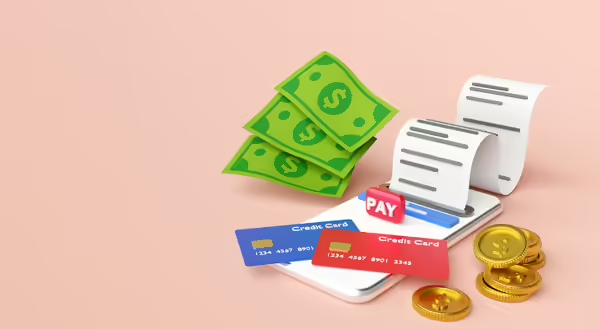
Have you heard the news? Do you use the Mint app to track your spending? Maybe you haven’t if you are not a Mint user. But the very popular budgeting app Mint launched in 2009 is phasing out to become integrated into the Intuit-owned app, Credit Karma. They are saying the Mint app will no longer be available starting the end of March 2024. Don’t freak out if you are a dedicated Mint user, there are other options! Let’s explore them together. Also if you are a dedicated Mint user, you can find information to download your Mint data here.
Explore different budgeting methods
There are endless amounts of options to budget or track your spending. It can seem very overwhelming or it may bring out some excitement for you. Whether you are brand new to tracking your expenses or having to find a new option because of Mint phasing out it's always good to explore your options. Here are some things to think about when looking at different methods:
- Are you a low-technology person? If you are then maybe a phone app or computer-based method isn’t for you. Then you can narrow down your search!
- Do you want to hit the easy button? For some people, they know they should be tracking their expenses to see where their money is going but they may find it hard to commit time. Did you know some financial institutions integrate a tracking system within their apps or computer programs? Check with your local bank or credit union to see if that is an option for you!
- See if methods offer free trial periods if you are considering paying for a service. Some options may cost money. This is a great way to test something out without being financially committed to anything.
- Look at features offered within a method. Maybe you are looking for more than just tracking your expenses within a method. Some methods may offer education, financial planning, community forums, etc. For example, one method may offer some financial planning tools that will help you plan for your financial future.
Of course, you are not limited to those four tips I just mentioned. But this is a good starting point when thinking through this to make sure you are making the best decision for yourself.
Make it work for you
I will be the first to admit that I have started and stopped A LOT of things for various reasons. I am not perfect and that is okay. When it comes to tracking expenses, make it work for you! If you are used to tracking your expenses and it is second nature then I applaud you, that is quite the task and something you have integrated into your life. For others who are starting or thinking about a New Year’s Resolution my first piece of advice to you is that whatever method you choose, make it work for you! If tracking every single one of your expenses and categorizing them sounds like a lot. Start by tracking one expense, maybe it’s your groceries or eating out. If the method you are choosing allows for customization of categories or other features explore it!
Set goals
Research tells us that we are more likely to achieve something when we are intentional with ourselves and write our goals down. Whether physically or digitally, it’s important to make a goal(s), set it, and try to achieve it! Here at Illinois Extension, we like using the SMART Goal method. This goal method stands for Specific, Measurable, Agreed Upon, Realistic, and Timed. Let’s explain what each step means:
Specific: This is the “Who? What? When? Where? How?” part of your goal. The more details you can put into your plan to accomplish this goal, the easier it can be for you to achieve it.
Measurable: With finances, this is pretty easy. This part of your goal is usually associated with a dollar amount.
Agreed Upon: If you are working with others to achieve this goal, make sure you all agree on it.
Realistic: Think about what you want to achieve. For example, are your goals realistic with the time and resources you have available to you? Try and predict challenges you may encounter. Then decide and reevaluate if needed.
Timely: This is the time part of your goal! Give yourself a due date for what you want to accomplish.
Always remember that it’s okay to reevaluate your goal and push back a due date or modify a goal. Nothing is set in stone. I have said it once and I will say it again, make it work for you. If this method sounds like a good way to think through your goals, use this resource sheet to help you organize your thoughts to make your goal(s)!
Want to learn more about finances for the New Year?
Register for our Money Basics webinar series
Check out some easy-to-use money management resources on our Finances website
Get timely updates about this and more money-related topics by signing up for Illinois Extension’s Personal Finance E-Newsletter!

Emily Harmon is responsible for finances and family life programming in the counties of Champaign, Ford, Iroquois, Vermilion, and other parts of Illinois as needed. Emily’s areas of interest are working with Money Mentor volunteers and providing financial literacy through research-based information. She also enjoys working with older adults to provide healthy living and healthy aging programming. She is passionate about providing resources to empower individuals to make decisions for themselves to improve their overall well-being